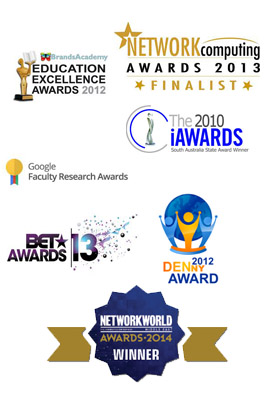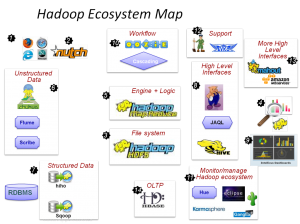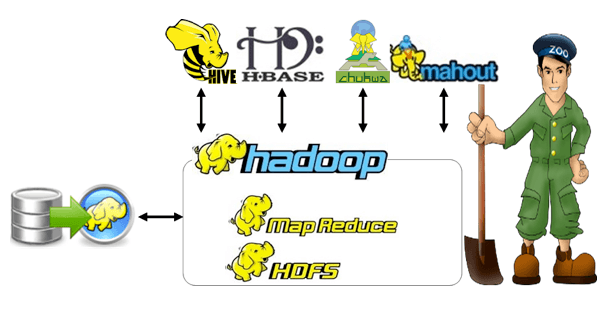Cloud computing is the readiness of computing services and resources (power, DC storage) over the internet based on user demand. At the present time, the user(s) tasks are shared on multiple servers from the central server to reduce the workload of a large system. If the user is nearer, then it is labelled as an edge server. This page is about the leading AWS Projects for final year students in the cloud computing research field!!!
As we already know well, the cloud computing system offers the services: network infrastructure construction supplier (IaaS), platform service supplier (PaaS), and software service supplier (SaaS). For instance: Presently, Oracle works on (EC2) service in Amazon.
In general, the loose coupling strategy launches the multi-clouds interaction as a messaging queue. Also, the elastic provision brings out the intelligence of loose or tight coupling approaches usages.
What is AWS cloud used for?
Amazon Web Services (AWS) is a secure worldwide popular cloud services framework that is designed to satisfy both individual and commercial growing needs. It offers data distribution, storage, computation power, and other operations. Also, it enables to host of the runtime changing websites through application and web servers in the cloud. Because of the strong network system, it assures unbreakable network security with management and control services.
SYNTAX FOR AWS CLOUD
Policy à Statement*
Statement à (Effect, Principal, Action, Resource, Condition?)
Effect à Allow | Deny
Principal à Principal: String*
Action à Action: String*
Resource à Resource: String*
Condition à Condition: Operator*
Operator à OpName, KeyName, Value*)
OpName à StringEquals | StringEqualsIfExists | StringLike | StringNotEquals | IPAddress | …
KeyName àaws:sourceVpc | aws:sourceIp |s3:prefix | …
ValueàString | Num | Bool
Here, while sending the access request to the AWS service, it produces a new request context. And, it is comprised of the principal requests for particular activities and resources. Then it verifies the request context with user/resource policies through the policy evaluation engine. As a result, it decides on granting or denying the resources.
Moreover, AWS services can integrate with AWS Config, Amazon Macie, Amazon GuardDuty Amazon S3 and AWS Trusted Advisor. For your information, here our resource team has listed out some key AWS Projects for Final year students to accomplish their degree.

Cloud Computing Projects using AWS
- AWS Security Logging
- Secure Data Transmission
- Secure AWS Data Encryption
- Fault-Tolerant System Modeling
- Amazon Corporate Logical Separation
- Ultra-Secure Network Architecture Design
- Network Security Monitoring Solution
- AWS based Disaster Recovery (DR) and Backup
- Wireless Access Points Protection for Storage
- Real-time Streaming Data on Sliding Windows Application
The reason behind the good rapport of AWS with customers is security. This service increases the confidence in AWS services. Hence, cloud computing has aim to build the trust factor in all the security services. For scholars’ benefit, here we have pinpointed some core research areas along with their thought-provoking research ideas.
Research Areas in Cloud Computing
Internet of Things
- IoT Device Management – Cope with the small or large scale IoT devices
- Greengrass – Based on the benefits of AWS service, the local data is processed by IoT devices.
- IoT Core – Establish secure communication among Cloud services and IoT devices through cloud framework
- Amazon FreeRTOS – The IoT devices are linked either within the system or with a cloud by a real-time microcontrollers OS
- IoT Analytics – Analyze the data generated from IoT devices
Artificial Intelligence
- Machine Learning – Train the system based on target variable and dataset
- Translate – Turn one language to another like Google Translate
- SageMaker – Easy designing, deploying, and training of machine learning regardless of model size
- Polly – Convert the text into audio format through AWS
- Transcribe – convert the audio into text format through AWS with reasonable and top-quality transcriptions
- Recognition – Recognize the face/ object in video and image by AWS
- Comprehend – Analyze the sentiments over text through NLP. For that, it figures out the in-depth relations in text
- Lex – Constructing chatbots in a fast and efficient way
AR & VR (Augmented Reality & Virtual Reality)
- Sumerian – In the web, makes ultra-quality virtual reality (VR) applications for user experiences and access. For instance: responsive 3D scenes
In addition, here our developers have highlighted some commonly used aws projects for final year research implementation Tools and Technologies. Then, we also suggested some programming languages that are applicable in AWS tools.
What are AWS Tools?
- Amazon Corretto
- AWS CodeCommit
- Amazon CodeGuru
- AWS CodeBuild
- AWS Cloud9
- AWS CodeArtifact
- AWS CloudShell
- AWS Cloud Development Kit
Which language is best for AWS?
- Net
- R
- Go
- Ruby
- Python
- Java
- Node. js
- S3 REST API
Our research assures you to help in both research and development aws projects for final year. By knowing the importance of AWS in the research community, we fine-tuned our technical skills through reputed journal papers. Through this, we have gathered all top-demanding algorithms for major functionalities such as VM Migration, Load Balancing, and Task Scheduling. When we choose the algorithms, it is necessary to check the following factors,
Important Criterions in Cloud Computing
- Cost
- Efficiency
- Makespan
- Load Balancing
- Optimization
- Deadline
- Reliability
- Priority
- Fault Tolerance
- Arrival Time
- Performance
- Completion Time
- Time Quantum
- Execution Time
- Energy Consumption
- Resource Utilization
Now, we can see about the major technological approaches which universally earned the scholar’s attention while implementing AWS Projects for Final year students. For any kind of AWS project, Task Scheduling, Load Balancing, and VM Migration are usual operations. So, our research and development team jointly spend more time collecting the optimal techniques for these events.
Research Issues in Task Scheduling
- Higher CPU Consumption
- Greater Throughput
- Lower Turnaround Time
- Reduced Waiting Time
- Decreased Response Time
For your reference, we have showcased some of them.
Task Scheduling Algorithms
- Inspired by Nature’s Law
- Bee Colony, A*, Genetic, Tabu Search, Simulated Annealing, and Ant Colony Algorithm
- Dependent Task Scheduling (static)
- Clustering , Duplication, and List Heuristic
- Indemin, pendent Task Scheduling (dynamic)
- Suffrage, Max-Min, Min-Min
Queuing Models for Task Scheduling
- M/G/1 Model
- G/G/1 Model
- M/M/1/N Model
- M/D/1 Model
- M/M/c/k Model
- M/M/c Model
Meta-Heuristic Algorithms for Task Scheduling
- Tree Physiology Optimization
- Whale Optimization
- Galactic Swarm Optimization
- Proximal Policy Optimization
- Particle Swarm Optimization (PSO) Algorithm
- Heuristic-PSO Schedule
- Genetic Algorithm
- Hybrid Cuckoo Algorithm
For the scheduling process, the criteria may differ based on task In the case of selecting a scheduling algorithm, it is necessary to focus on the following scheduling features. The algorithms that meet these criteria are eventually become optimization approaches for scheduling.
Task Scheduling Criteria
- CPU Utilization – Maximum keep the CPU as full of activity
- Throughput – Number of functions performed per unit of time
- Turnaround Time – Time is taken to run the specific function
- Waiting Time – How long the function is waiting in queue to execute
- Response Time – Time between the request submission and first response
Load Balancing in Cloud Computing
Nowadays, the real-time information of users (personal/corporate) is increasing day by day which leads to dealing with fast-changing large-scale data. So, the people are looking forward appropriate adaptive system. In cloud computing, scalability is the main characteristic to support runtime changes of a large volume of big data. Here, the user can employ this factor to fulfill their increasing application needs.
And, it is practically achieved through the Load Balancing event which avoids the clashing of user workloads. To balance the workloads from users, it shares the workloads to many servers based on resource availability. As a result, it satisfies the application needs in all aspects. We provide complete assistance in implementing best aws projects for final year.
Next, we can see the algorithms that meet the objectives of load balancing. Whereas, these algorithms are classified under elastic and hardware basis which is aimed to decrease the response time and increase the throughput with resource utilization.
Load Balancing Algorithms
- Elastic Load Balancing
- Classic Load Balancing
- Application Load Balancing Algorithm
- Network Load Balancing Algorithm
- Hardware Load Balancing
- CPU Load Balancing Algorithms
- Server Load Balancing Algorithms
- Memory Load Balancing Algorithms
- Task Load Balancing Algorithms
- VM Load Balancing Algorithms
Other Main algorithms for Load Balancing
- Electre Algorithm
- Monte-Carlo Method
- Deep Q-Learning
- GREY VIKOR Technique
- Analytic Hierarchy Process (AHP)
- Fuzzy VIKOR Approach
- Stochastic Search Optimization Algorithm
- Fuzzy Analytic Hierarchy Process (Fuzzy-AHP)
- State–Action–Reward–State–Action (SARSA)
- Technique for Order Preference by Similarity to Ideal Solution (TOPSIS)
Last but not least, now we can see about the third major function VM Migration. Similar to other processes, VM Migration is also used to control the load. In addition, it minimizes energy utilization, increases fault tolerance, and manages the low-level system.
VM Migration Algorithms
- ABC, ACO, and Honeybee Hive
- Bees and Cuckoo Search Algorithm
- Tsalis and Belief Entropy
- River and 1D – Dragon Fly Formation
- Krill Herd and Fat Tree
- Torus and Hunting Search Algorithm
- Bat and Cross-Entropy Algorithm
- Shannon and Kapur’s Entropy
Further, if you want more information on recent developments and achievements in AWS Projects for Final Year Students then make a tie-up with us. We will let you know a few more incredible findings on the AWS research field.








